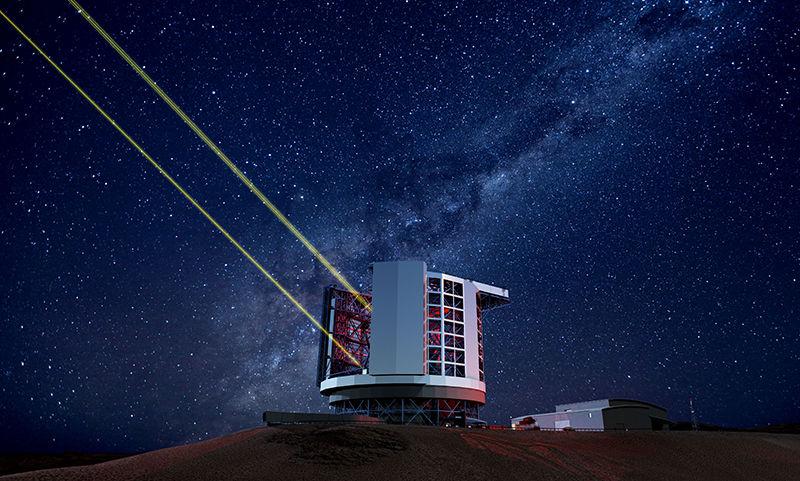The universe has secrets, but mankind’s largest telescope will soon be built to unlock many of them.
The Giant Magellan Telescope officially entered its construction phase after its 11 international partners announced they had raised the necessary funds to break ground June 3. More than $500 million are ready to transform a Chilean mountainside into an optical observatory 10 times more capable than the Hubble space telescope. First light is expected in 2022, and full science operations will be online by 2024.
The GMT partners include Texas universities – A&M and UT – national heavyweights such as Harvard and Carnegie Mellon, and groups abroad in Australia, Korea and Brazil.
The telescope’s optical surface will be comprised of 7 mirror segments to form a 25-meter diameter – the largest in history. It’s location in the Chilean mountains reduces the atmospheric distortions that limit ground based observatories, but the GMT has an additional advantage – “adaptive optics” will compensate for the remaining atmosphere to produce the best images ever taken from Earth’s surface.
Analysis
$500 million is a lot of cash for what amounts to a complicated set of mirrors, but it’s the intellectual and cultural wealth this telescope promises that makes GMT’s announcement so historical.
Simply put, the GMT will be bigger, stronger and faster than any observatory previously built. It will literally peer into the past – it will reveal the universe as it looked cosmic minutes after the Big Bang. It will spot tiny distortions in starlight created by black holes. It may even find “second Earths” by spotting planets in the “goldilocks” orbit around other stars.
But what I love about this observatory is its potential cultural impact. The GMT will be capable of producing images up to 10 times sharper than Hubble. 25 years after its launch into low Earth orbit, the Hubble Space Telescope continues to produce images that fascinate the public and contribute to science. For millennia people have looked up at the sky and marveled at the stars, but Hubble showed just how much more lay hidden beyond the darkness. Galaxies collided, gas giants glowed and stars exploded – never had the cosmos been so filled with chaotic beauty, and generations were inspired to unlock humanity’s place in the universe.
The GMT promises to do the same, but on a larger scale. Imagine the power of an image that shows the first galaxy ever formed in the universe. How might that change the way our civilization views its place among the stars? Or the photo of the first “Earth-like” planet. These images do more than critical science – they inspire. And that’s an investment worth much more than data.


























